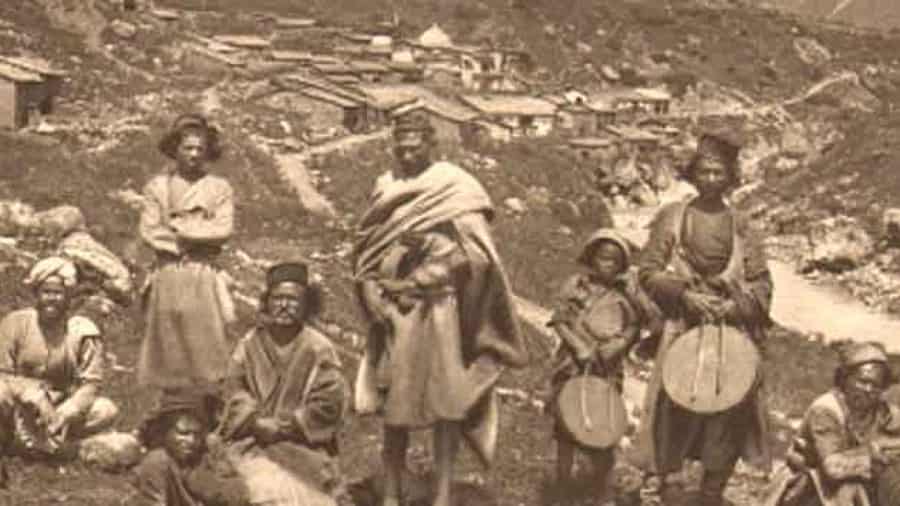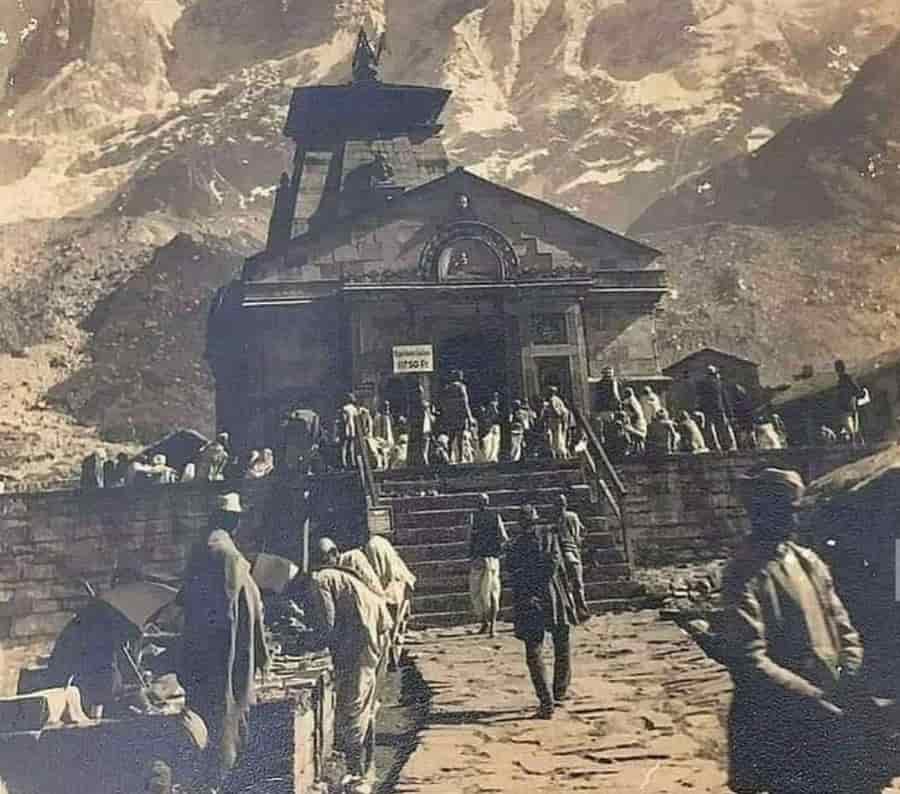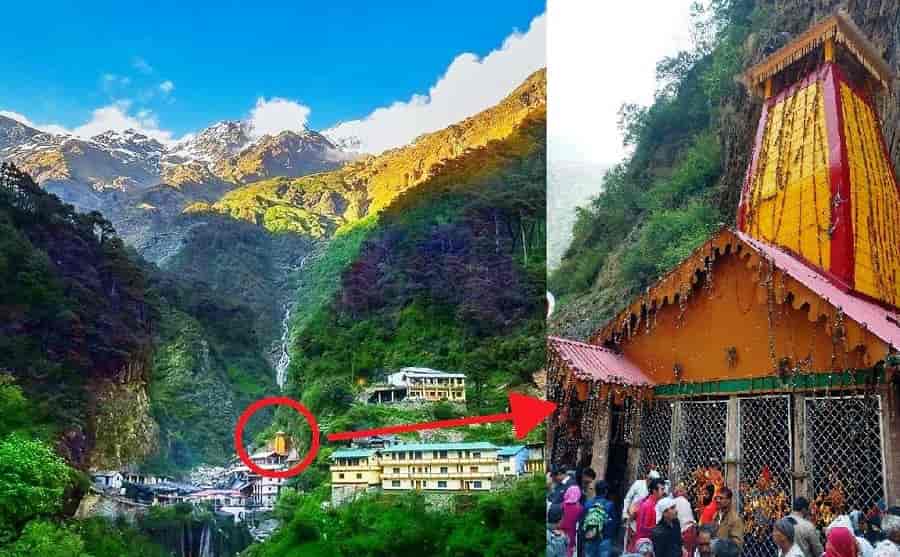There are many holy places to visit in India but the Sacred shrines of Char Dham– Yamunotri, Gangotri, Badrinath and Kedarnath in Uttarakhand are the major Hindu pilgrimage destinations in India. Pilgrims once in a lifetime try to visit the sacred shrines for spiritual awakening and Moksha. In this blog post we will give you the most interesting information about the history of Char Dham Yatra.
Aren’t you curious to know how and when the sacred Yatra started and became major pilgrimage destinations in India for Hindus?
Who Established Chardham Yatra?
The exact origin of Char Dham Yatra is not known to us but the roots are connected to spiritual Hindu practices. It is said that Char Dham Yatra was first performed by the great Indian philosopher and reformer Adi Shankaracharya in 8th Century CE.
He established these sacred pilgrimage circuits in Uttarakhand. He along with his 12 disciples started the Yatra and during the journey composed Chardham Mahamantras. The broader Char Dhams (Badrinath, Dwarka, Puri and Rameshwaram) were also established by him.
CharDham Yatra has evolved over time as many kings like King Harshvand Singh, Raja Jauneh Singh Guleria of Punjab and Baghan Singh of Askat Peshawar and many dynasties patronized the Yatra and contributed to the development of Char Dham sites. Since then, the devotees from all across the globe visit Char Dhams to seek divine blessings and spiritual fulfillment.
Who Made Char Dham Temples?
The Char Dham Temples – Gangotri, Yamunotri, Badrinath and Kedarnath are not built by any one individual. The temples are constructed in different periods by many saints, devotees and rulers.
Mentioned here are the creators and contributions made by people in the development of Char Dham Temples of Uttarakhand.
Badrinath Temple

Badrinath Temple, the abode of Lord Vishnu was established by Sage Adi Shankaracharya. He found a black stone in Alaknanda River which resembled the image of Lord Vishnu. He placed the idol at a cave near the current location. Later many rulers and devotees contributed to the development of the temple.
- Know Detailed Information: History of Badrinath Dham
Kedarnath Temple

Kedarnath temple, the abode of Lord Shiva was built by Pandavas of Mahabharata in order to atone for their sins of killing their own relatives in the war. The temple was lost under snow but sage Shankaracharya found the idol and rebuilt the temple in 8th century CE. Later the Garhwal Kings helped in the preservation of Kedarnath Temple.
- Know Detailed Information: History of Kedarnath Dham
Gangotri Temple

Gangotri Temple, The abode of goddess Ganga was built by King Bhagirath in ancient times. It was him who brought river Ganga to earth. In the 18th century, General Amar Singh Thapa built the temple of Gangotri. Later many local rulers, trusts and royal families in Garhwal supported the development of Gangotri Temple.
- Know Detailed Information: History of Gangotri Dham
Yamunotri Temple

Yamunotri Temple, the abode of goddess Yamuna was built by Tehri ruler Naresh Sudarshan Shah in 1839. The temple of Yamunotri has been constructed many times due to natural calamities. In the 19th century the Maharani of Jaipur Guleria Devi constructed Yamunotri Temple when a massive earthquake destroyed the major portions of the temple.
- Know Detailed Information: History of Yamunotri Dham
Legends Associated with Char Dham Temples
Steeped in Mythology and spiritual legends, Chardham temple’s tales will amaze your curious mind. Every temple has interesting legends associated with it. Let’s know about it –
Badrinath Temple Legend
According to a popular myth, Badrinath Temple was previously the abode of Lord Shiva. One day Lord Shiva and Goddess Parvati found a crying baby at their doorsteps. Lord Shiva sensed the divine aura of that baby. Therefore, he warned Goddess Parvati to not give shelter to the baby. But Goddess Parvati’s motherly instincts could not stop her from taking the baby.
It was their mistake to give the baby a shelter as they later realized that the baby was Lord Vishnu in disguise who refused to leave the place. So, Shiva and Parvati had to leave the place to look for a new shelter. Since then the place became Badrinath, the holy abode of Lord Vishnu.
Kedarnath Temple Legend
After the war of Mahabharata, Pandavas wanted to seek forgiveness from Lord Shiva for killing their own relatives in the war. But, Lord Shiva did not want to forgive them so easily. So, he disguised as a bull and hid in the Himalayas.
It was Bheem who recognized the bull when they were in Guptkashi and tried to stop it. Lord Shiva as a bull began to shrink himself in the ground after sensing that Bheema recognized him. Only the rear end of the bull was visible which appeared as a Jyotirlinga in front of the Pandavas. Hence, Lord Shiva in the form of Jyotirlinga gave his blessings to the Pandavas for their liberation.
Gangotri Temple Legend
Legends states that King Bhagirath brought river Ganga to earth by intense penance and devotion. He wanted to liberate the souls of his ancestors (the 60,000 sons of King Sagar) who, according to the curse of Sage Kapil, turned into ashes.
The holy waters of Ganga was the only requirement to liberate their souls. So, kingBhagirath started intense penance and devotion. As a result Goddess Ganga descended from heaven from the matted locks of Lord Shiva.
Yamunotri Temple Legend
According to the myth Goddess Yamuna was born from the Amrit (nectar) spilled from Amrit Manthan in ancient times.
As per another popular legend, Sage Asit Muni used to live near Yamunotri. Due to old age he could not visit Yamunotri to pray daily. So he started intense penance to please her. Moved by his devotion, Goddess Yamuna appeared before him which caused her to flow backward to his ashram.
Chardham Yatra Evolution- Infrastructure, Accessibility and Tourism
During British colonial rule in India, efforts were made to improve the infrastructure of Char Dham temples. Britishers have built roads and transport systems to make the shrines accessible to the devotees as it stands as a cultural legacy of India.
Moreover, in today’s day and age, our Indian government has invested time and money in the development of the Char Dham Temples. They provide many facilities and amenities to the devotees such as better road connectivity, helicopter services and better accommodation to the tourists.
As a result, the tourism of Uttarakhand got a boost in economy. Tourists from all over the world visit Uttarakhand and get mesmerized by the cultural, natural and spiritual wealth of the region.
Conclusion
Revived by sage Adi Shankaracharya, the timeless spiritual and historical legacy of CharDhams in Uttarakhand has been shaped by extreme devotion and patronage of ancient rulers. Today, it stands as one of the most popular and significant pilgrimage places in India to seek spiritual liberation.





 Call
Call WhatsApp
WhatsApp Enquiry
Enquiry